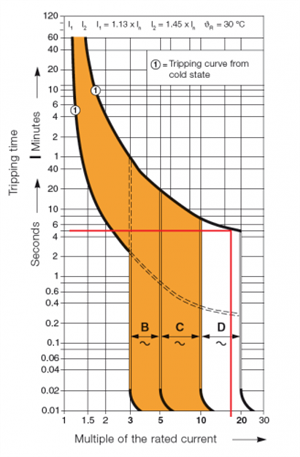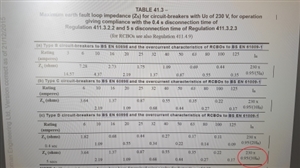When cross referencing time current graphs for type D MCBs I do not get a value of 10In for a 5 second tripping time.
For example see ABB time current graph below giving a current of around 16In for a 5 second trip time.
What is the reason for the difference in values when comparing type D MCB time current charts and table 41.3 in BS 7671 17th Edition A3 for 5 second trip times?



